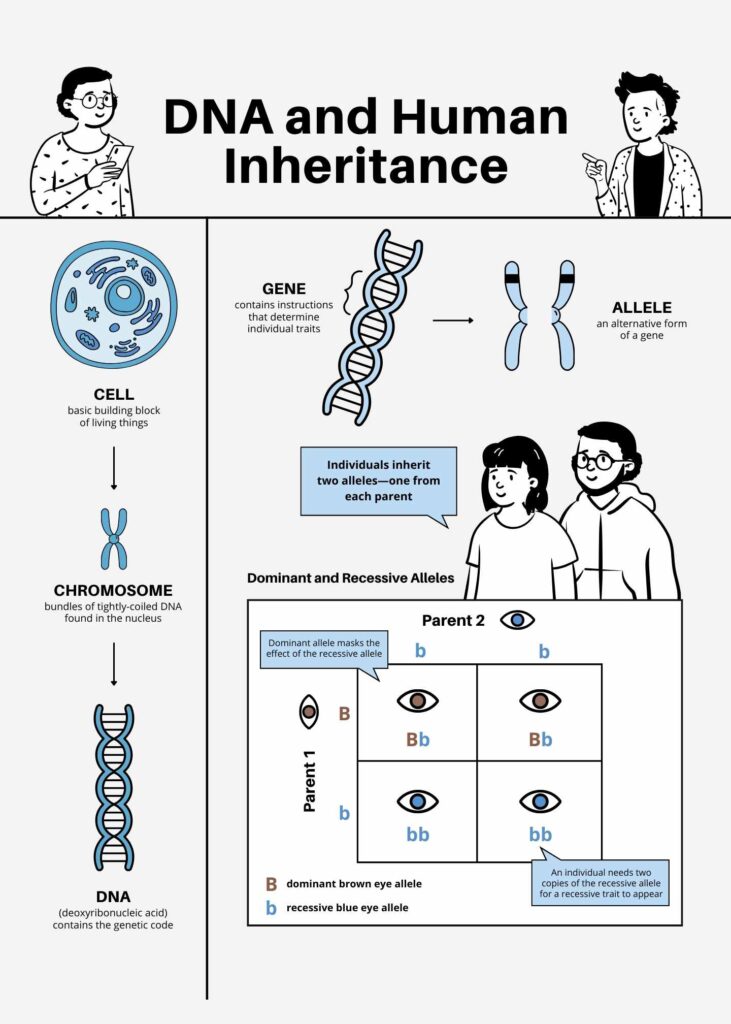Imagine DNA as a Recipe Book:
- The Recipe Book (DNA):
- Think of DNA as a super-special recipe book that holds all the instructions for making you! Just like a recipe book has recipes for yummy dishes, DNA has instructions for making living things.
- The Letters in the Recipe Book (DNA Letters: A, T, C, G):
- In our recipe book, we don’t use regular letters like A, B, C, D. Instead, we use special letters: A, T, C, and G. These are the DNA letters, and they spell out the instructions for building and maintaining living things.
- The Words in the Recipe (Genes):
- In our recipe book, each page has special words made up of the DNA letters. These words are like “recipes” for specific things, and we call them genes. Each gene has instructions for making a particular part of you, like your eye color or how tall you’ll grow.
- Chapters in the Recipe Book (Chromosomes):
- Now, our recipe book has many pages, and we group these pages into chapters. In the same way, DNA is organized into chapters called chromosomes. Humans have 23 pairs of chromosomes.
- Sharing Recipes (Inheritance):
- Just like you might inherit your grandma’s secret cookie recipe, you inherit your DNA from your parents. It’s like getting a mix of recipes from both of them.
- Reading the Recipe (Making Proteins):
- When it’s time to cook, you follow the recipes in your book. In your body, cells read the DNA instructions and follow them to make proteins. Proteins are like the building blocks that create and maintain different parts of your body.
- Unique Recipe Books (Individual Differences):
- Your DNA recipe book is unique to you. It’s what makes you different from everyone else. It’s like having your very own special cookbook!

So, in summary:
- DNA is like a magical recipe book for building and maintaining living things.
- The DNA letters (A, T, C, G) are like the special alphabet in this book.
- Genes are like individual recipes for specific things in your body.
- Chromosomes are like chapters that organize these recipes.
- You inherit your DNA from your parents, like getting a mix of recipes.
- Cells read the DNA instructions to make proteins, the building blocks of your body.
- Your DNA is unique to you, just like having your very own special cookbook!
This analogy helps make the complex concept of DNA more relatable and fun for kids!


No responses yet